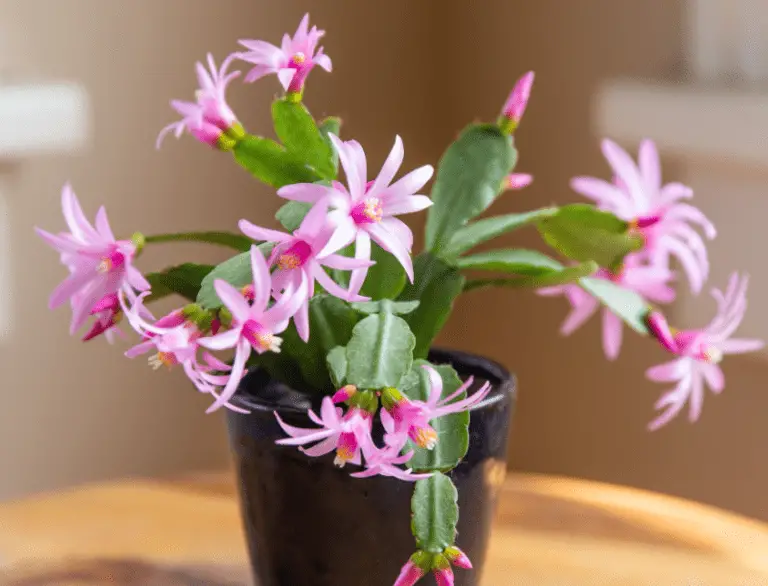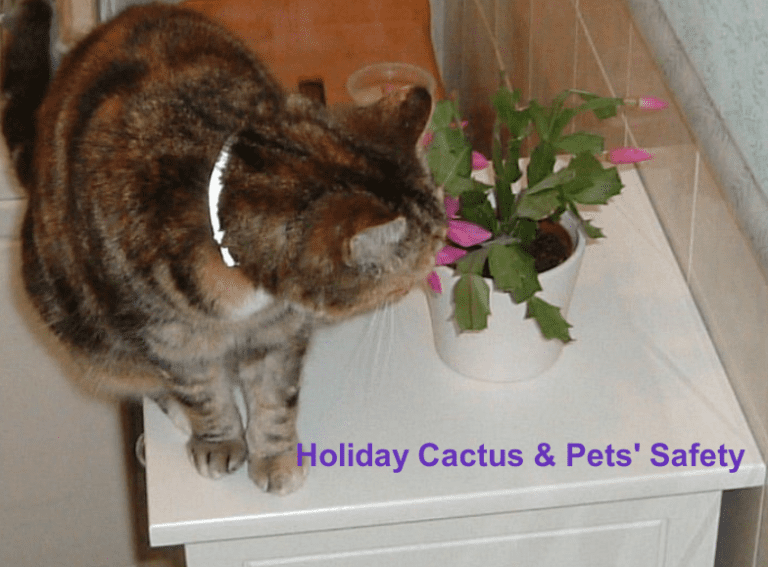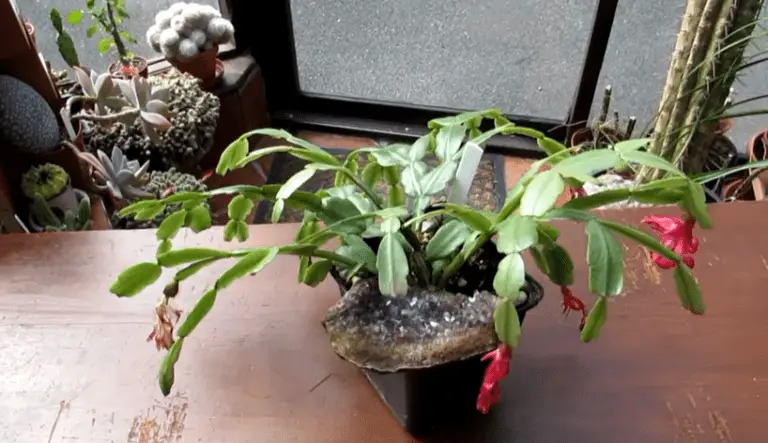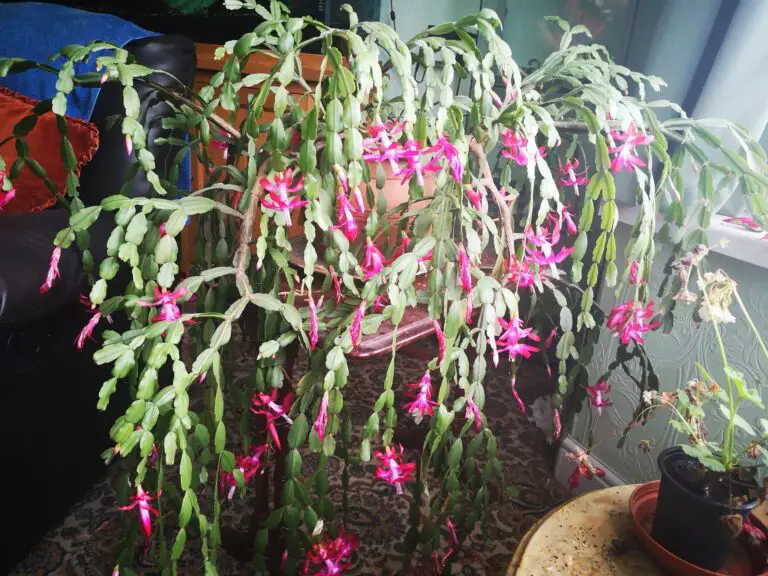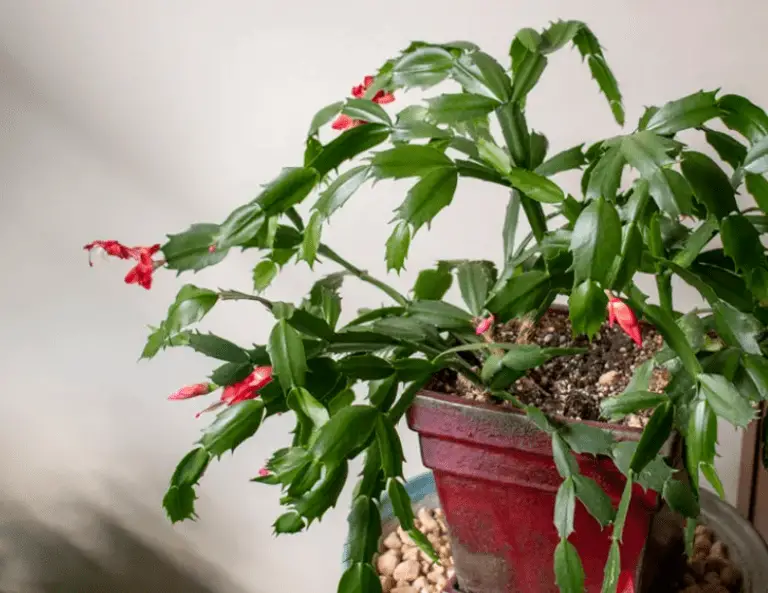Christmas Cactus vs Easter Cactus – Key Differences
Christmas cactus and Easter cactus are popular holiday plants due to their colorful blooms during the winter holidays. While they share many similarities, they also have some notable differences. Typically, they are different in their blooming time and the shape of their leaves.
The Christmas cactus blooms in mid-winter, around Christmas, and has flat stem segments with scalloped edges, the Easter cactus on the other hand, blooms in late winter to early spring and has subtly rounded edges on its stem segments.
There is also great confusion between the Christmas cactus and the Thanksgiving cactus. Since they bloom almost around Christmas. Thanksgiving cactus blooms in late fall to early winter, typically around Thanksgiving, and has pointy claw-like projections on the leaf edges.
In summary, here are the differences between the Christmas, Thanksgiving, and Easter cacti plants.
| The Christmas cactus | Thanksgiving cactus | The Easter cactus |
| Blooms in late fall or early winter. | Blooms in late fall, around Thanksgiving. | Blooms in spring around the Easter holiday. |
| The leaves are scalloped along the edges. | The leaves are prominently toothed along the edges. | The leaves are rounder with fewer projections along the edges. |
| The flowers are pendulous and tubular, with long stamens that extend beyond the petals. | The flowers are tubular in shape but have shorter stamens that do not extend beyond the petals. | The flowers are star-like, with numerous petals arranged in a circular pattern. |
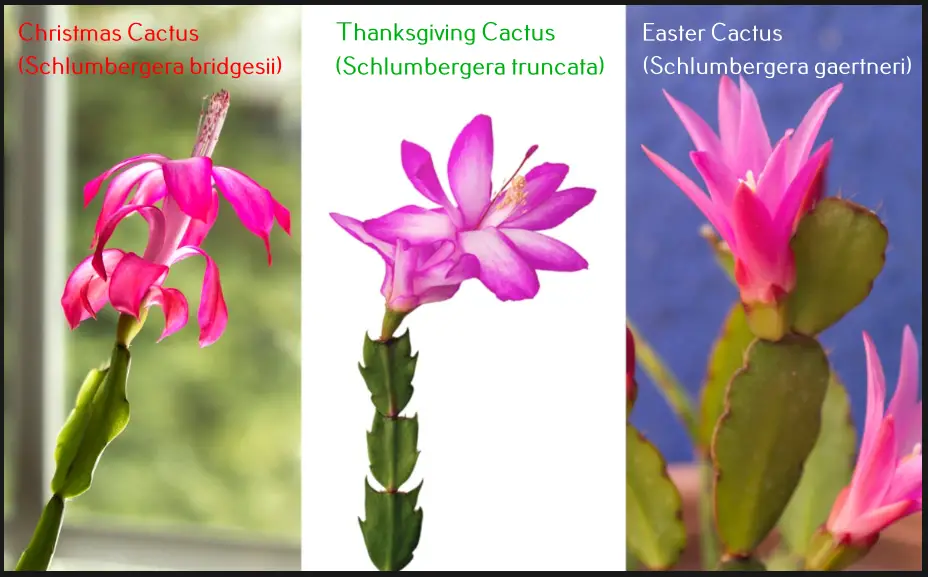
Christmas vs. Thanksgiving vs. Easter Cactus
Christmas, Thanksgiving, and Easter cacti are part of the Schlumbergera genus native to Brazilian rain forests, where they grow as epiphytic plants on tree branches. The difference between them is so subtle that they are often confused for one another.
There are two simple ways to tell the difference between these three-holiday cacti. By looking at the shape of their leaves (stem segments), flowers, and blooming behavior.
Stem segment shape
The Christmas cactus has teardrop-shaped leaves with scalloped projections around the edges. Thanksgiving cactus has pointed and claw-shaped projections on the edges of its broad leaves. The Easter cactus has subtly rounded edges on its leaves that are sometimes slightly hairy.
All these three-holiday cacti have segmented stems that are also referred to as leaves because of their flattened appearance. Like most cacti, these are not true leaves but succulent stems adapted to storing water.
In cacti, leaves are usually modified into spines to reduce the transpiration rate and protect the plant from animal damage.
Blooming behavior
Christmas, Thanksgiving, and Easter cacti are named after their flowering season. The Thanksgiving cactus typically blooms in fall or early winter, the Christmas cactus blooms during winter, and the Thanksgiving cactus blooms in early spring around Easter.
Thanksgiving and Christmas cacti are often confused with one another as their blooming period are closer.
In nature, Schlumbergera flowers range from pale to deep pink and occasionally into red. However, a hundred cultivators and hybrids have been produced with various shades of colors, including white, red, purple, yellow, red, peach, and gold, among others.
Since they are all short-day plants, they can be induced into blooming when the season comes. To get a Christmas or Thanksgiving cactus to bloom, you must place the plant into darkness 12 to 14 hours a day for six to eight weeks.
Similarly, the Easter cactus needs a period of dormancy in fall and winter to set flower buds. During this time, stop fertilizing, reduce watering, and keep the plant in a cool place, with a temperature around 50-60°F (10-15°C) with reduced light.
Holiday cacti care requirements
Thanksgiving cactus, Christmas cactus, and Easter cactus have similar maintenance requirements. When growing them as a house plant, you ought to replicate their natural growing conditions for them to thrive and give you a beautiful boom year after year.
You need to provide the following:
1. Bright indirect light
In their natural habitats, Schlumbergera grows in a cool environment under the shade of trees. They prefer bright indirect sunlight. Indoors, you can place the plant on an east-facing window or a place with filtered sunlight.
In a frost-free period, you can hang the pot of your holiday cactus under the branches of a shade tree or a shaded porch.
Exposing your holiday cactus to direct sunlight during spring or summer can scorch the plant, discolor the leaves, and turn your cactus yellow or purple. These changes can interfere with the flowering pattern of your plant, stunt its growth, or make it die slowly.
2. Balanced watering
Although classified as cactus, Thanksgiving, Christmas, and Easter cactus won’t tolerate drought conditions. In their native habitats, they receive frequent rains, but the waters drain rapidly.
Similarly, you must water your holiday cacti frequently without saturating the soil. Ideally, water when the top inch of the soil mix feels dry.
Excess water around the roots is likely to kill your cactus. Waterlogged soil prevents oxygen around the roots, resulting in root rot. This is why you should allow the soil to dry between your watering.
Watering should also be reduced when the cactus is about to boom, around August and September, and increased slightly when flowers form.
3. Proper fertilizing
In the wild, holiday cacti receive a constant supply of nutrients from decaying tree leaves, barks, and bird droppings. While growing in your home, ensure to fertilize the cactus monthly throughout the growing season. Use a well-balanced, soluble, or granular fertilizer, such as a 10-10-10.
Holiday cacti also have a higher requirement for magnesium than most houseplants. Fertilize monthly during the growing season with Epsom salts solution mixed at 1 teaspoon per gallon of water; apply one week after the regular fertilizer.
Holiday cacti don’t need fertilizer during winter. The dormant plant has enough stored sugars for blooming. Adding any fertilizer may result in no blooming or dropping of flower buds.
4. Repotting the plant
Although Christmas cacti like to be root-bound, repotting the plant after 3 or 4 years helps restock the plant with nutrients and more space for growth. Christmas cactus woody stem, compacted roots, and stunted growth show that your plant needs to be repotted.
You may also prune and divide a cactus that has grown too big before it drops or falls apart. This should be done only when the holiday cactus has ended blooming and is entering the active growth period.
5. Pests and diseases control
Although fairly immune from pests, it is common to find some pests on a holiday cactus, such as mealybugs, aphids, and spider mites. In outdoor gardens, snails and slugs also love cactus plants. To control pests, use a recommended houseplant insecticide as directed on the product label.
Root rot and stem rot are the main fungal diseases that affect a holiday cactus. As stated, they are mainly caused by overcrowding, excessive watering, or poorly draining soil.
Bacterial and fungal conditions are usually difficult to treat, but you can save the plant by removing the damaged parts and repotting it in fresh soil.
Final Thought
You can tell the difference between the Thanksgiving cactus, Christmas cactus, and Easter cactus by looking at the shape of their leaves. These holiday cacti also bloom at different times of the year, as their names suggest.
References:
- The University of Wisconsin Extension: Holiday Cactus
- Encyclopaedia Britannica: Schlumbergera
My name is Diane M Lewik, and I am the founder of this website. I am a degree holder in plant biology from the University of California – Berkeley. Over the years, I have cultivated a vast collection of succulents and I have learned a great deal about how to grow and care for these unique plants. Feel free to ask any questions in the comment section below.
